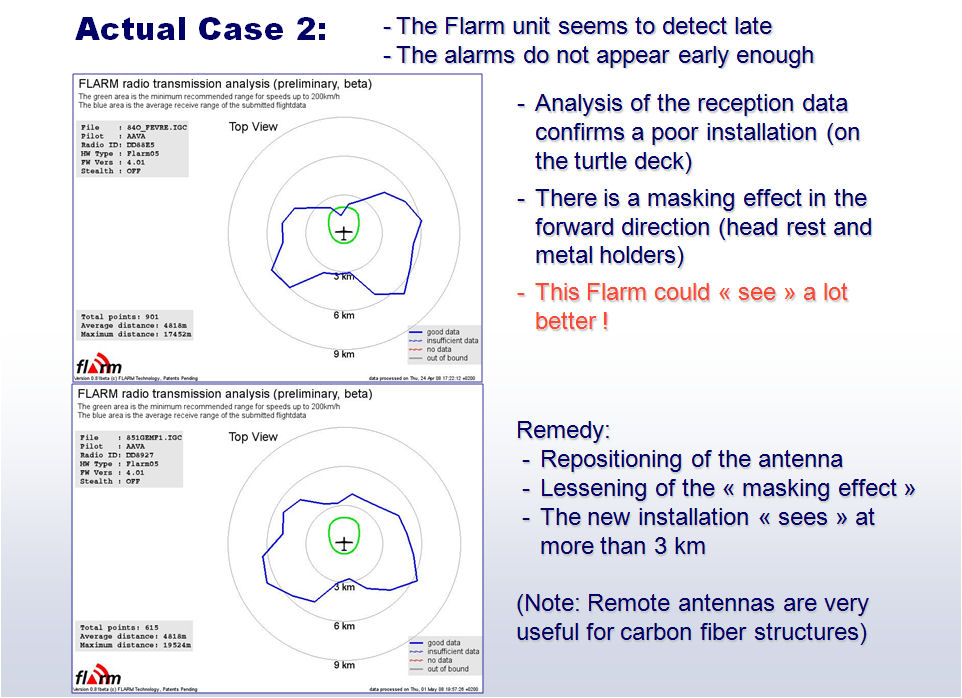
Installation Issues
All wireless technologies are sensitive to proper installation and antenna placement. FLARM includes both GPS and radio antennas that must be properly located in a small glider cockpit to function well. In all cases, regular verification of the performance of the system should be done to ensure functioning as expected. FLARM provides an analysis tool that looks at diagnostic information saved in each IGC log file, and uses this to plot antenna performance in different directions as shown in the graphics below.
Below are two self-explanatory graphics that were prepared in 2008 by friends, Regis Kuntz and Gerard Herbaud of the Association Aeronautique Verdon Alpilles (AAVA) located in Vinon, France. Both graphics present actual cases of FLARM systems that were noticed to not function properly; were tested; and remedied to bring the detection performance to levels exceeding the manufacturer’s recommendation.
In the first case, the detection range was found to be extremely poor. After tests, diagnostics, and repair, the unit performed better than the minimum manufacturer’s recommendation. The key point here is that no electronic device is guaranteed to always remain free of damage or failure. Tools exist, including on-line tools, to help in the diagnostics of FLARM. Regular checks of the proper functioning of instruments are not only common (e.g., pre-flight) or required (e.g., annual inspection) in aviation, but in the case of safety systems, they are crucial.

In the second case, a FLARM was noticed to detect threats but “late,” particularly from the frontal direction. The FLARM was mounted on the turtle deck, behind the headrest, a typical example of poor installation where the headrest and associated mounting metal bars created a “masking” effect. After re-location of the device and its antenna, the performance was re-tested and found much better than the manufacturer’s recommended minimum. The point here is that poor installation will lead to degraded or poor performance even for a perfectly good unit.
Properly locating an antenna in the small cockpit of a sailplane is sometime a bit of a trial and error process. Carbon fiber is a notorious source of “masking” effects. Remote antennas and remote screens are available to help resolve location. Safety systems are certainly not devices for which an installation along the lines of “when everything else fails, read the instructions” would be appropriate!


